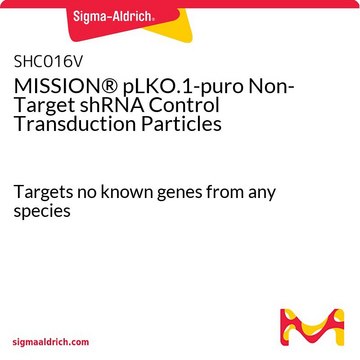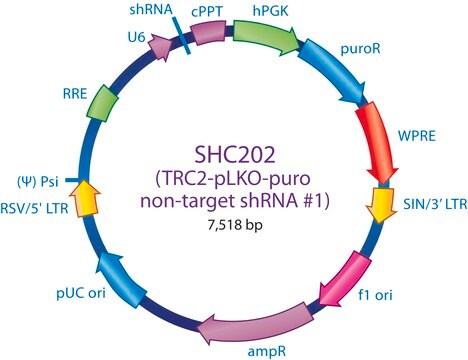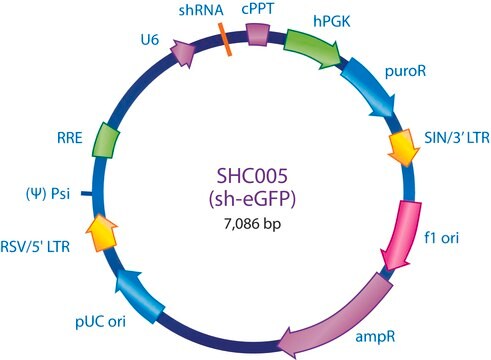SHC016
MISSION® pLKO.1-puro Non-Target shRNA Control Plasmid DNA
Targets no known genes from any species
Sinónimos:
MISSION® Control Vectors, negative control, negative shRNA control, non-target control, non-target shRNA, non-target shRNA control, shRNA control
About This Item
Productos recomendados
Nivel de calidad
Línea del producto
MISSION®
concentración
500 ng/μL in TE buffer; DNA (10μg of plasmid DNA)
Condiciones de envío
dry ice
temp. de almacenamiento
−20°C
¿Está buscando productos similares? Visita Guía de comparación de productos
Categorías relacionadas
Descripción general
Aplicación
- in tumor cells for multicolour imaging
- in human adult low calcium temperature keratinocytes
- in mouse embryonic fibroblasts, to study the biological functions of IP6K1 (inositol hexakisphosphate kinase)
- to study the function of Zac1 (zinc finger protein regulating apoptosis and cell cycle arrest) expression in astroglial differentiation
Información legal
Opcional
Código de clase de almacenamiento
10 - Combustible liquids
Clase de riesgo para el agua (WGK)
WGK 2
Punto de inflamabilidad (°F)
Not applicable
Punto de inflamabilidad (°C)
Not applicable
Certificados de análisis (COA)
Busque Certificados de análisis (COA) introduciendo el número de lote del producto. Los números de lote se encuentran en la etiqueta del producto después de las palabras «Lot» o «Batch»
¿Ya tiene este producto?
Encuentre la documentación para los productos que ha comprado recientemente en la Biblioteca de documentos.
Los clientes también vieron
Nuestro equipo de científicos tiene experiencia en todas las áreas de investigación: Ciencias de la vida, Ciencia de los materiales, Síntesis química, Cromatografía, Analítica y muchas otras.
Póngase en contacto con el Servicio técnico










